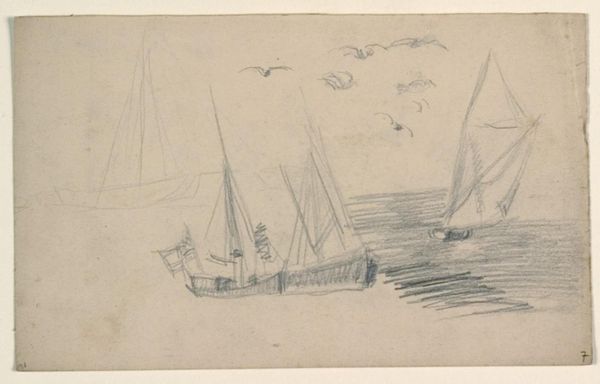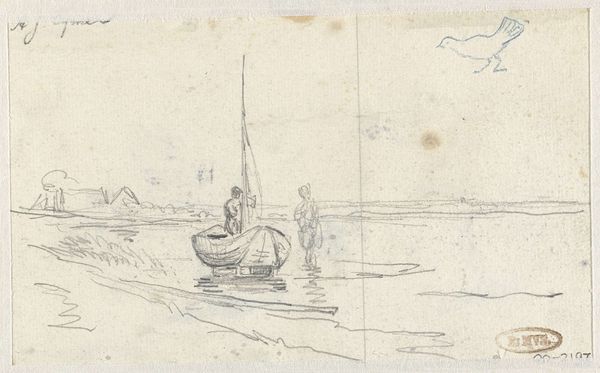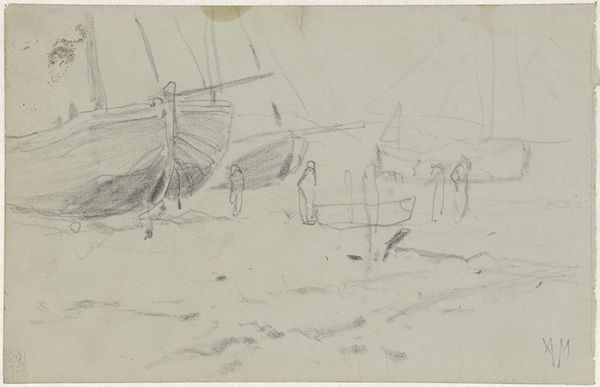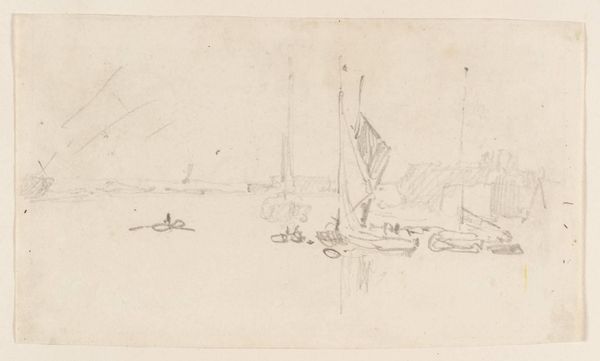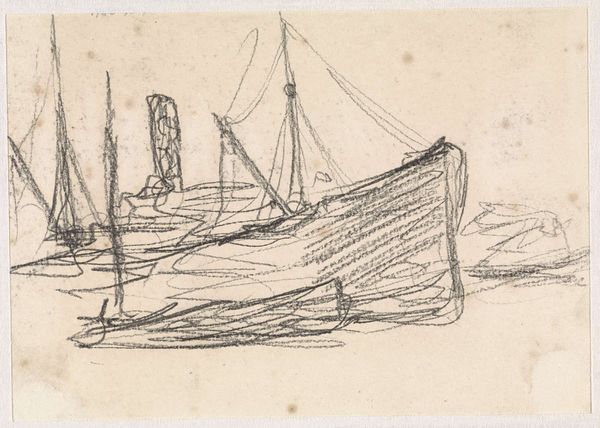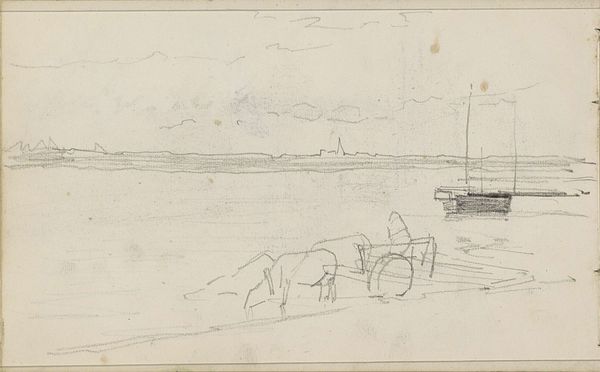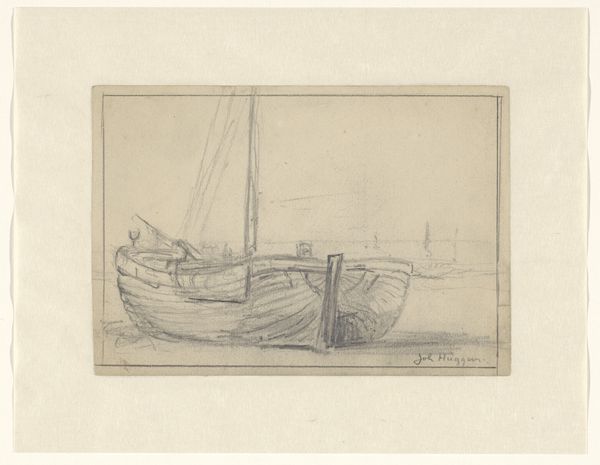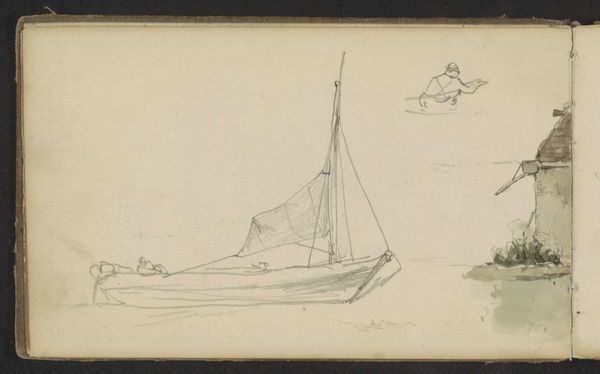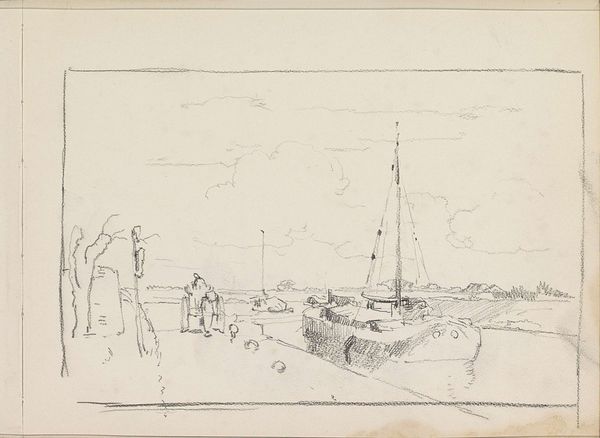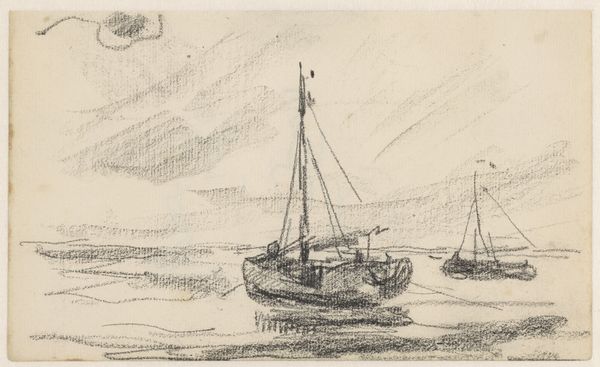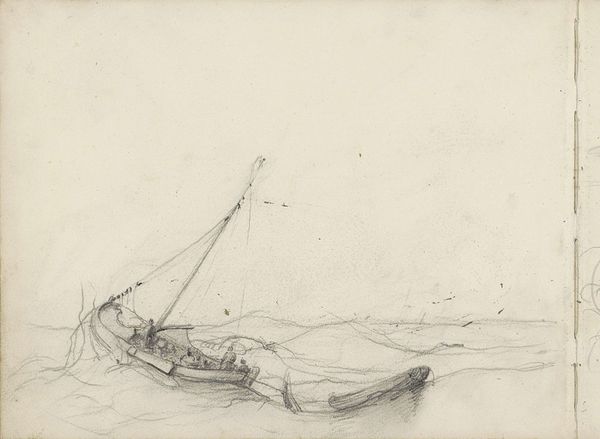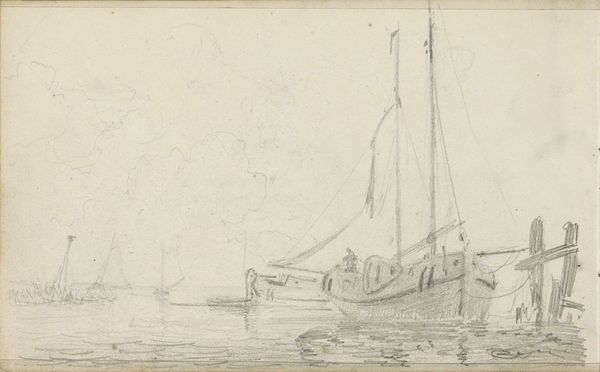
drawing, pencil
#
drawing
#
impressionism
#
landscape
#
pencil
#
realism
Dimensions: height 155 mm, width 230 mm
Copyright: Rijks Museum: Open Domain
Editor: This is "Boats on the Beach," a pencil drawing by Anton Mauve, made sometime between 1848 and 1888. It’s at the Rijksmuseum. It's such a simple sketch, almost ghostly in its lines. What stands out to you in terms of its construction? Curator: Its formal elements provide significant insight. Note the economical use of line to define form. Mauve masterfully employs a limited tonal range, emphasizing the subtle modulations within the composition. Editor: What does that achieve? Curator: By using a restricted palette and minimal detail, Mauve focuses our attention on the skeletal structure of the scene. Observe the diagonal thrust of the main sailboat's mast, and the implied recession into space created by the overlapping hulls. How do these compositional choices guide your eye? Editor: I see that the diagonal does create movement, making the boats dynamic rather than static. Curator: Precisely. This dynamism is further accentuated by the contrast between the relatively solid form of the primary boat and the more ethereal rendering of the figures and distant vessels. Editor: It's almost like he's exploring the essence of "boatness," not necessarily a specific boat. Curator: Indeed. We see a preoccupation with fundamental forms rather than descriptive detail, a feature that allows the viewer to participate actively in constructing the image. Editor: So, it is the simplicity itself that makes it engaging, not in spite of it? Curator: Exactly. Through this stark visual language, Mauve directs our gaze inward, towards an essential understanding of the scene before us, distilled to its most rudimentary components. Editor: I hadn’t considered how much the simple structure actually does. Thank you for this insight. Curator: My pleasure. The beauty lies in discerning how the formal choices resonate with the thematic intentions of the work.
Comments
No comments
Be the first to comment and join the conversation on the ultimate creative platform.

